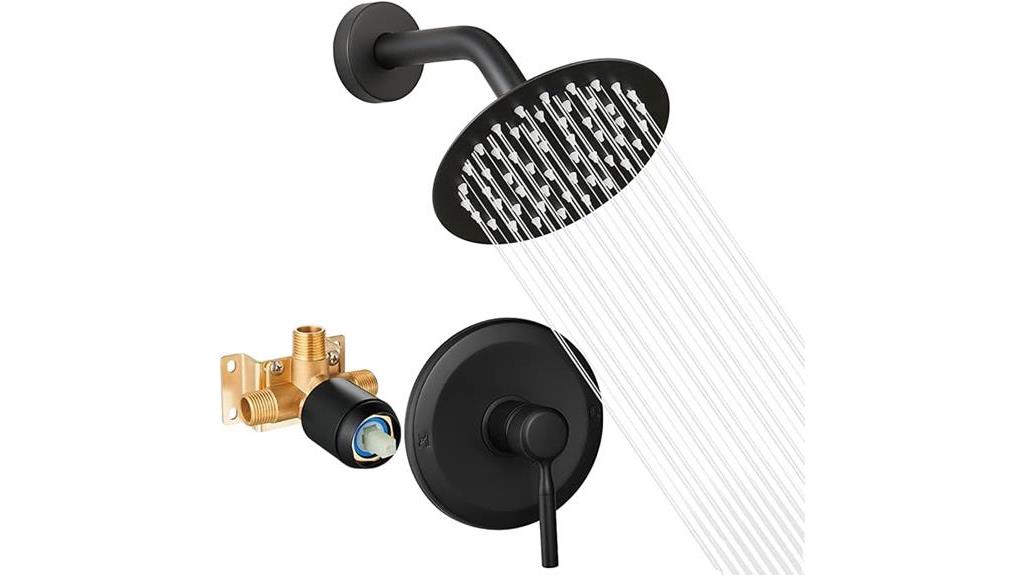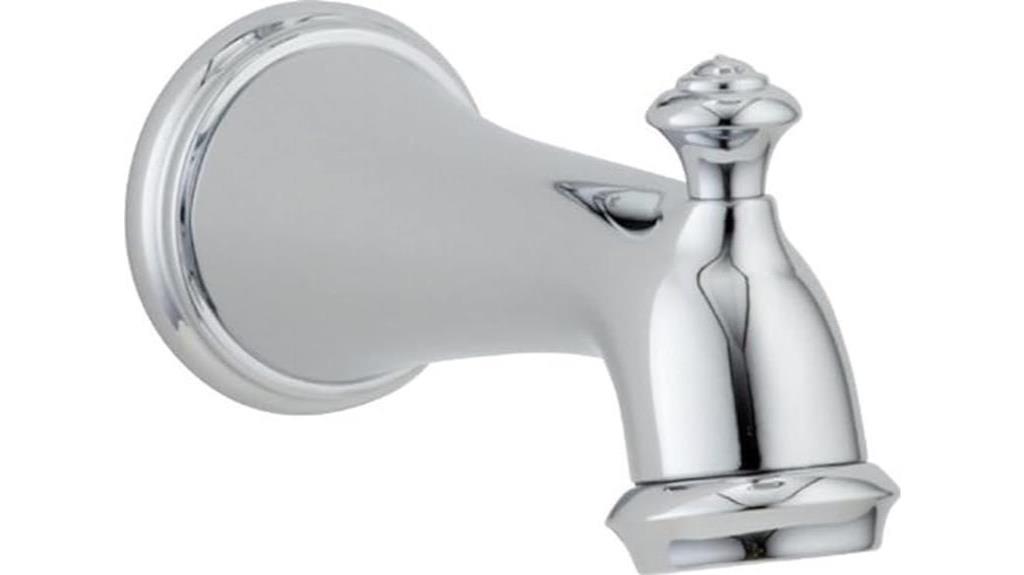Are you fed up with the never-ending sound of your toilet constantly refilling? We’ve got you covered!
In this article, we’ll unveil the secrets behind this plumbing predicament. From a faulty flapper to a clogged fill valve, we’ll explore the culprits that keep your toilet from finding peace.
Get ready to master the art of toilet troubleshooting and bid farewell to the incessant refilling.
So, buckle up and let’s dive into the depths of your toilet’s mysteries!
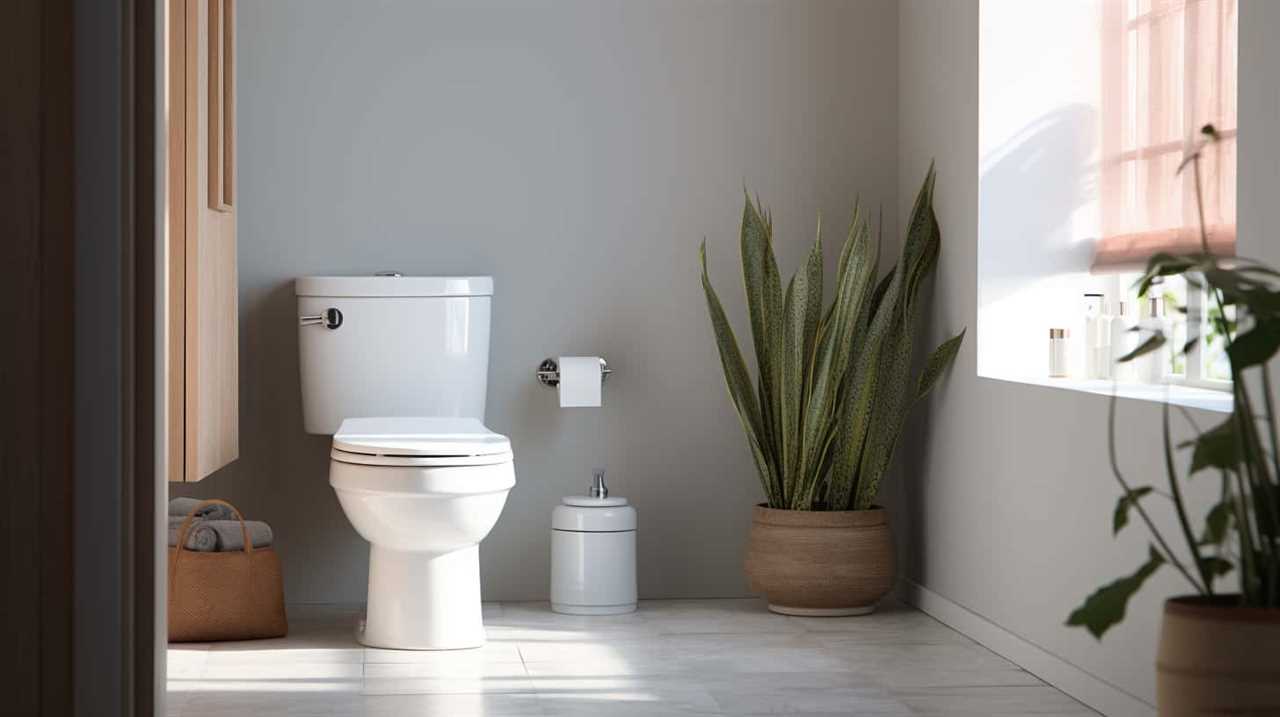
Key Takeaways
- A faulty toilet flapper can cause a toilet to constantly fill up.
- High water level in the tank can result in constant filling and potential overflow.
- A malfunctioning float ball or float cup can contribute to a constantly filling toilet.
- A clogged fill valve or a leaking toilet supply line can also cause a toilet to constantly fill up.
Faulty Toilet Flapper
One common reason for a toilet constantly filling up is when the toilet flapper is faulty, causing water to continuously leak from the tank into the bowl. The toilet flapper is a rubber valve that seals the opening between the tank and the bowl. If it’s worn out or damaged, it may not create a proper seal, leading to water leakage.
To troubleshoot a faulty toilet flapper, you can try a simple fix like adjusting the chain or cleaning any debris that may be interfering with its function. However, if these solutions don’t work, it may be necessary to replace the toilet flapper.
In the next section, we’ll address another potential cause for a constantly filling toilet: a high water level in the tank.
High Water Level in the Tank
To continue our discussion on the possible causes of a constantly filling toilet, let’s address the issue of a high water level in the tank.
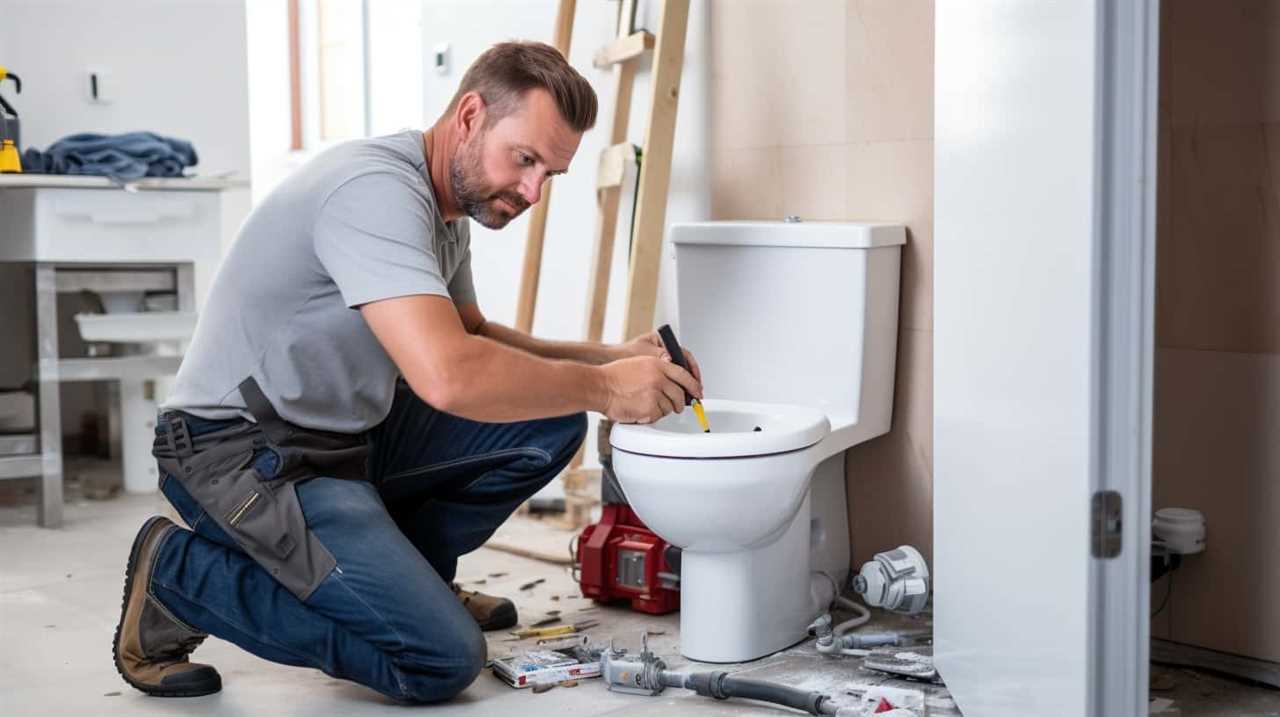
Maintaining the correct water level in the toilet tank is crucial for its proper functioning. If the water level is too high, it can lead to continuous filling and even overflow.
Troubleshooting water level issues involves checking the float valve and adjusting it if necessary. The float valve controls the flow of water into the tank, and if it isn’t functioning correctly, it can cause the water level to rise.
Additionally, checking for any blockages in the fill valve or the overflow tube is essential. Regular toilet tank maintenance, including cleaning and inspecting these components, can help prevent high water levels and ensure the proper functioning of your toilet.
Malfunctioning Float Ball or Float Cup
Now let’s delve into the issue of a malfunctioning float ball or float cup, which can contribute to a constantly filling toilet.
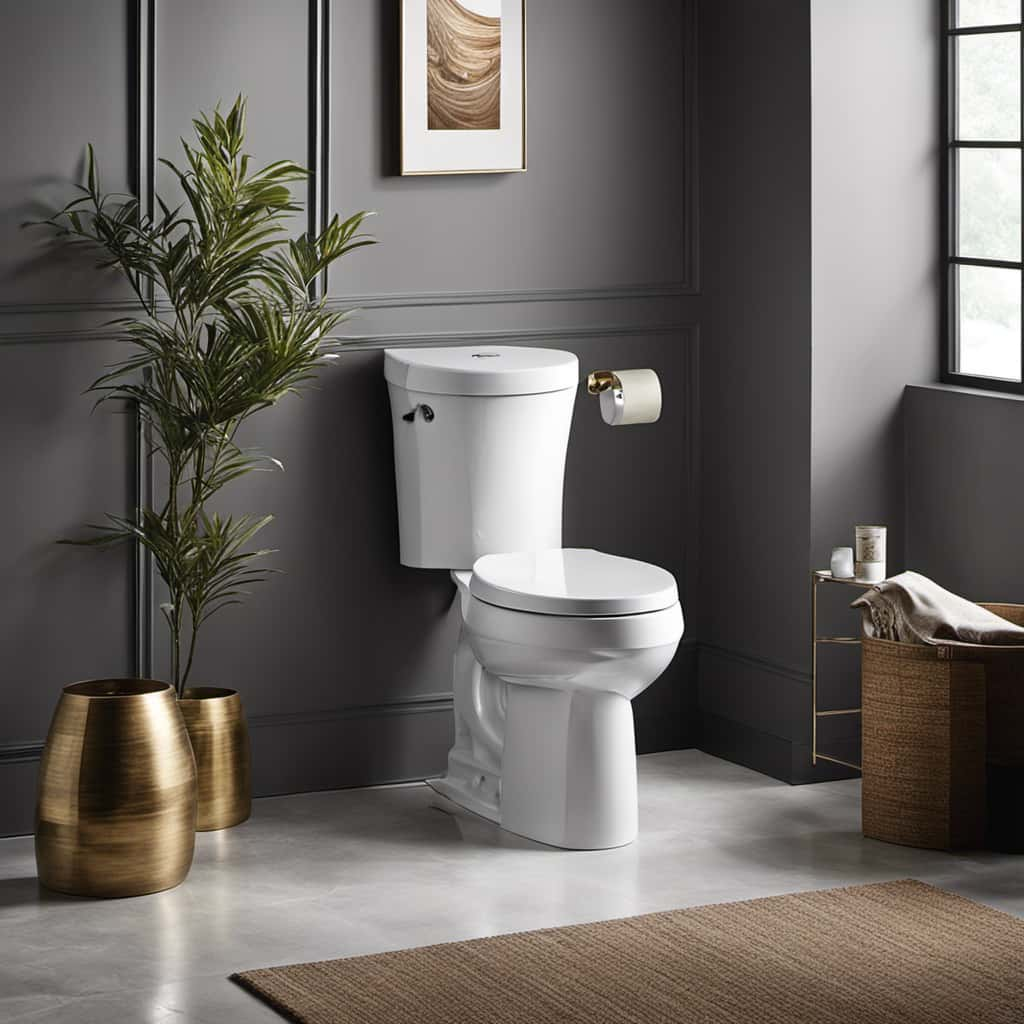
The float ball or float cup is responsible for regulating the water level in the tank. When it malfunctions, it can cause the toilet to continuously fill with water, leading to wastage and potential damage.
To address this problem, you can start by inspecting the float mechanism for any signs of damage or debris. If there’s any damage, it may be necessary to replace the float ball or float cup.
Additionally, adjusting the water level by either bending the float arm or adjusting the float cup height can help resolve the issue.
Regular maintenance and repairing of the float mechanism is crucial to ensure proper functioning and prevent water waste.
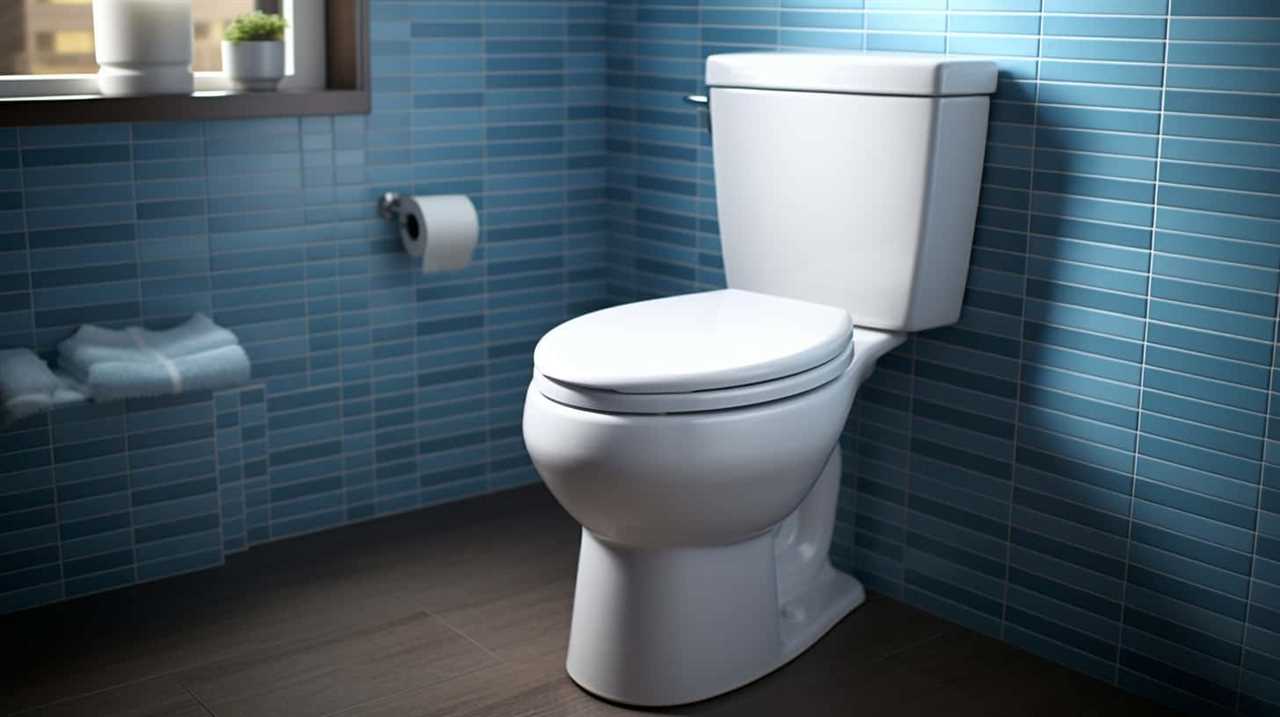
Clogged Fill Valve
Our next issue to address is a clogged fill valve, which can cause your toilet to constantly fill up. Toilet maintenance is crucial to prevent this problem.
A clogged fill valve occurs when debris, such as sediment or mineral buildup, obstructs the flow of water into the tank. This can lead to a continuous water flow and a constantly filling toilet.
To troubleshoot a clogged fill valve, start by turning off the water supply to the toilet. Then, remove the fill valve cap and inspect it for any blockages. Use a brush or cloth to clean the valve and remove any debris. Finally, reassemble the valve and turn on the water supply to see if the issue has been resolved.
Regular fill valve troubleshooting and maintenance can help prevent clogs and ensure proper functioning of your toilet.
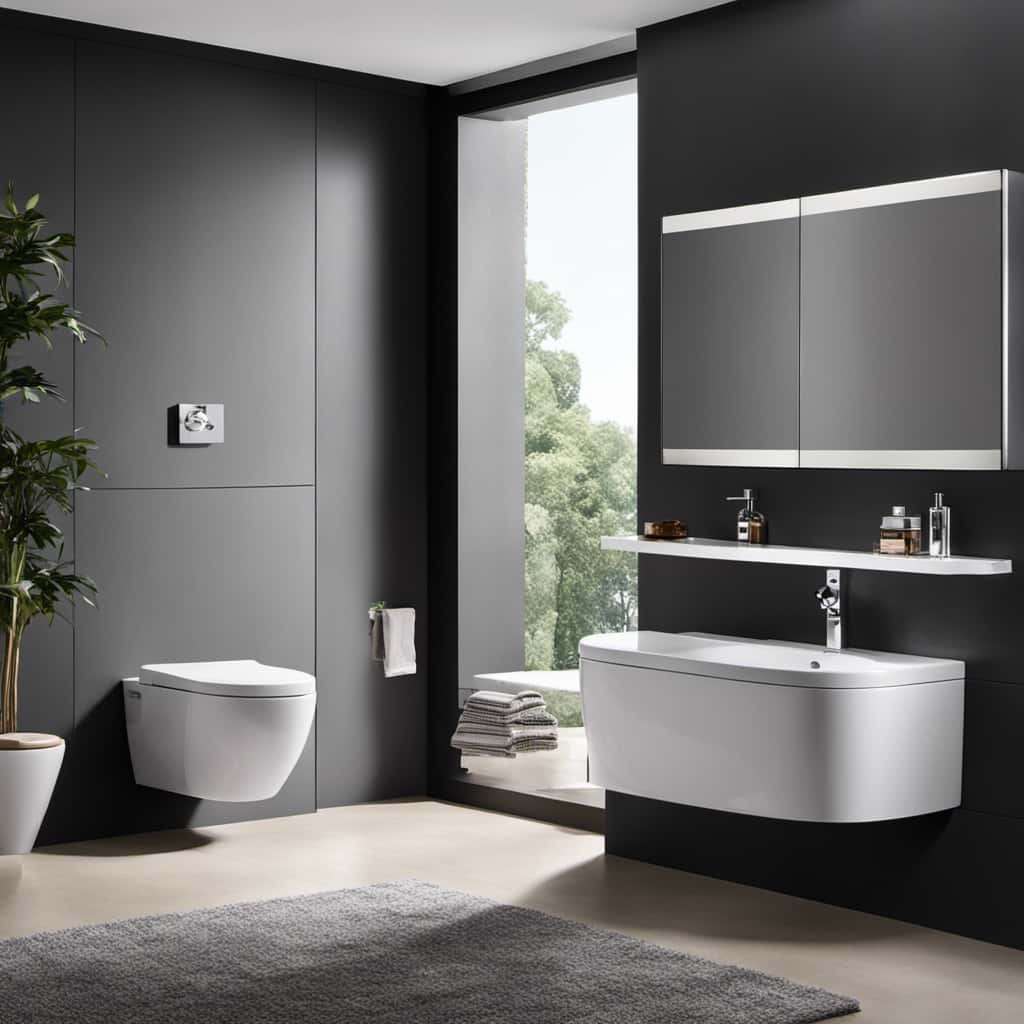
Leaking Toilet Supply Line
One common cause of a constantly filling toilet is a leaky toilet supply line. A leaking toilet supply line can lead to a continuous flow of water into the toilet tank, causing it to constantly fill up.
To repair a leaking toilet supply line, it’s important to first turn off the water supply to the toilet. Next, detach the supply line from both the toilet tank and the shut-off valve. Inspect the supply line for any cracks or damage and replace it if necessary.
Ensure that the new supply line is securely connected to both the toilet tank and the shut-off valve. Once the supply line is properly installed, turn on the water supply and check for any leaks.
Troubleshooting a faulty toilet flapper can also help prevent a constantly filling toilet.

Frequently Asked Questions
How Can I Fix a Toilet Flapper That Is Not Sealing Properly?
To fix a toilet flapper that is not sealing properly, we recommend troubleshooting the issue first. Check for any debris or mineral buildup that could be affecting the seal. If that doesn’t work, consider a toilet flapper replacement.
What Should I Do if the Water Level in My Toilet Tank Is Too High?
To adjust the water level in a toilet tank, first locate the water level adjustment screw or valve. Turn it clockwise to lower the water level or counterclockwise to raise it. Troubleshooting common toilet tank issues requires proper maintenance and regular inspection.
How Do I Know if the Float Ball or Float Cup in My Toilet Is Malfunctioning?
To troubleshoot float ball issues, check if it is properly attached and adjust the arm if necessary. For float cup repair, ensure it is securely connected and clean any debris that may hinder its function.
What Are Some Signs of a Clogged Fill Valve in a Toilet?
When troubleshooting a malfunctioning fill valve, signs of a faulty one include the toilet constantly filling up, water running non-stop, or a weak flush. We’ll discuss how to address these issues.
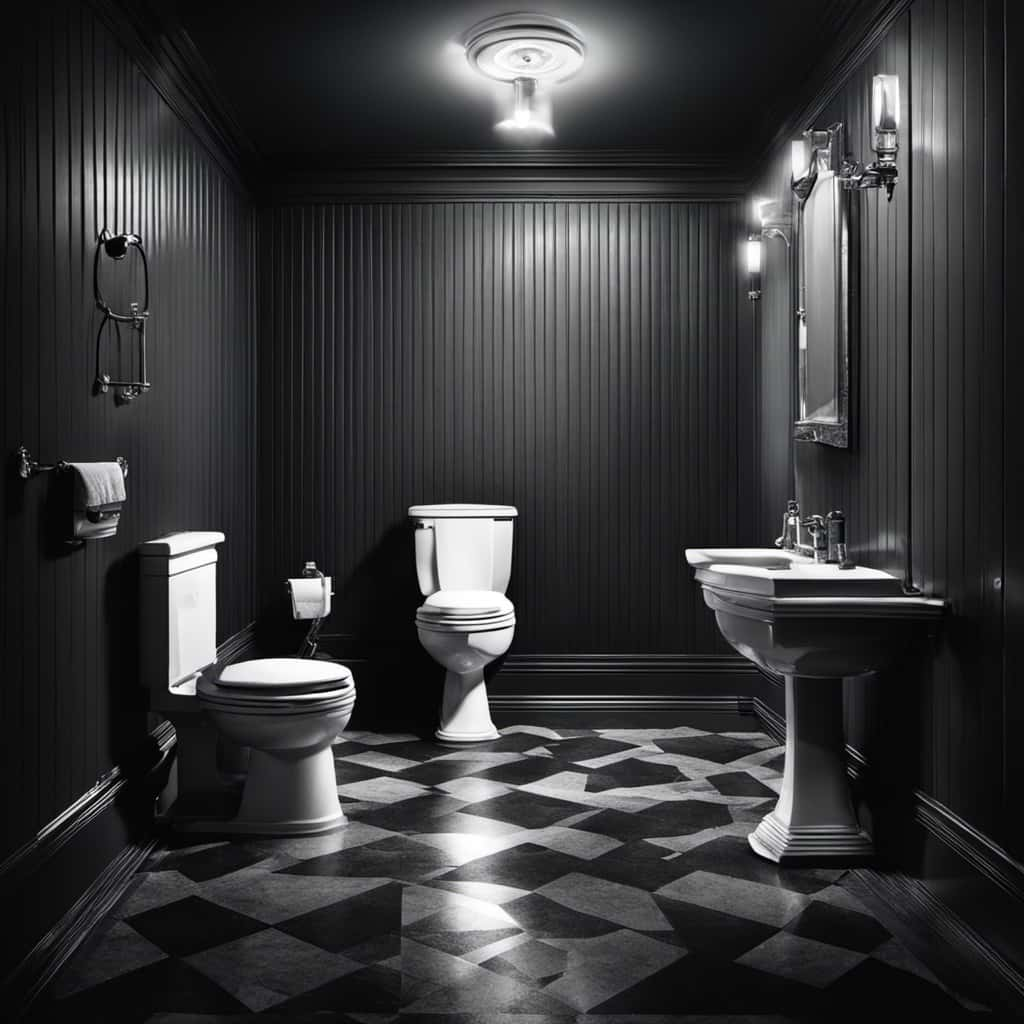
How Can I Detect if My Toilet Supply Line Is Leaking?
To detect if our toilet supply line is leaking, we can perform a visual inspection of the line for any visible cracks or signs of water leakage. Additionally, we can troubleshoot any problems by checking the water pressure and tightening any loose connections.
Conclusion
In conclusion, a constantly filling toilet can be caused by various issues such as:
- A faulty flapper
- High water level
- Malfunctioning float ball or float cup
- Clogged fill valve
- Leaking toilet supply line
It’s important to address these problems promptly to prevent further damage and water wastage. Regular maintenance and inspection of the toilet can help identify and resolve these issues effectively.



